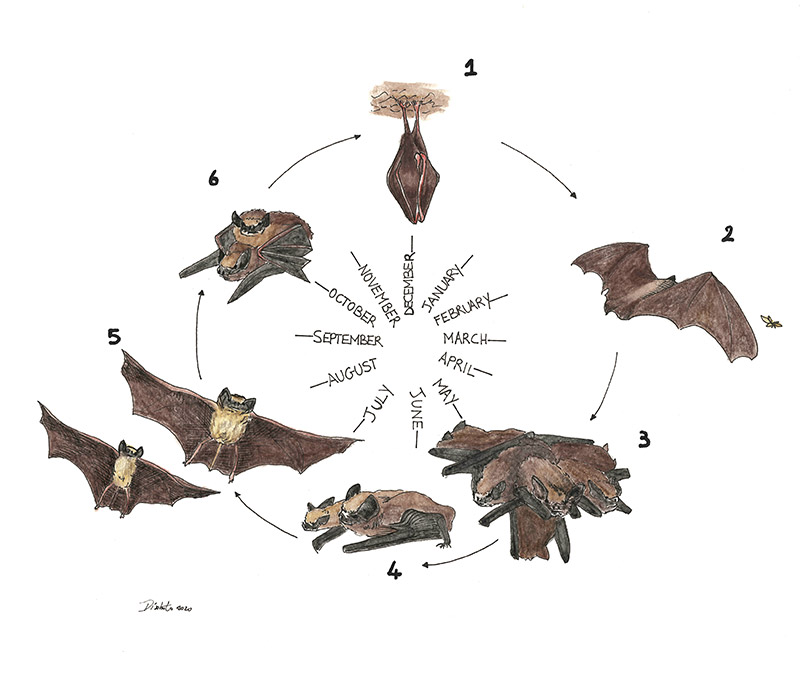The year of life of a bat is marked by the rotation of the seasons:
- In the severe winter months, when prey is no longer available (the species of bats living in Europe are insectivorous, that is feed on insects), bats move to a shelter where to spend this hostile season and get into a condition of extended torpor. The vital functions slow down and the body temperature drops almost to 0°C. This condition is called hibernation. The energy expenditure is minimized and bats survive with previously collected fat reserves. It’s important to avoid disturbing them during the winter period, because the awakening causes a waste of energy and the bat may not be able to survive until the next spring.
- In early spring they wake up from this state of torpor and begin their moving towards the summer refuge, looking for food. There are species which carry out also long travels, as real migrations. The shelters in spring are used only in the daytime, when the bats rest, while at dusk they go out for hunting.
- Between the end of spring and the beginning of summer, the females move in warm and protected shelters for giving birth, establishing colonies formed also by thousands of individuals. They develop these colonies to ensure that there is less heat dispersion from the new born, which are initially hairless. Usually, each female gives birth to only one baby, few species which may give birth to two. The mating period starts between the end of summer and the beginning of autumn, but the fertilization of the ovule will happen only in spring, in order to allow the birth of the young in summer. Autumn is the season in which bats must collect the fat stores needed to approach the hibernation and in which the displacement to winter shelters takes place.
